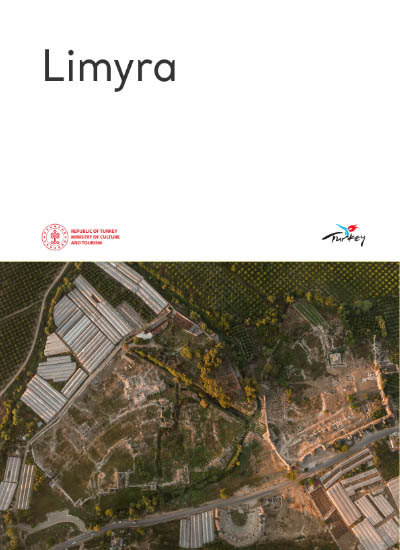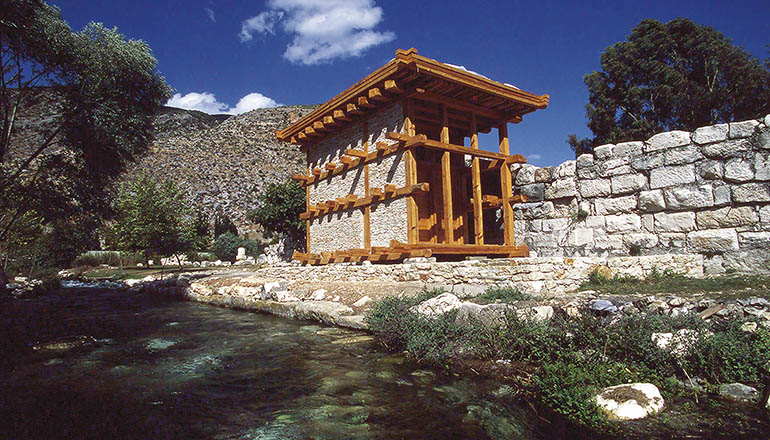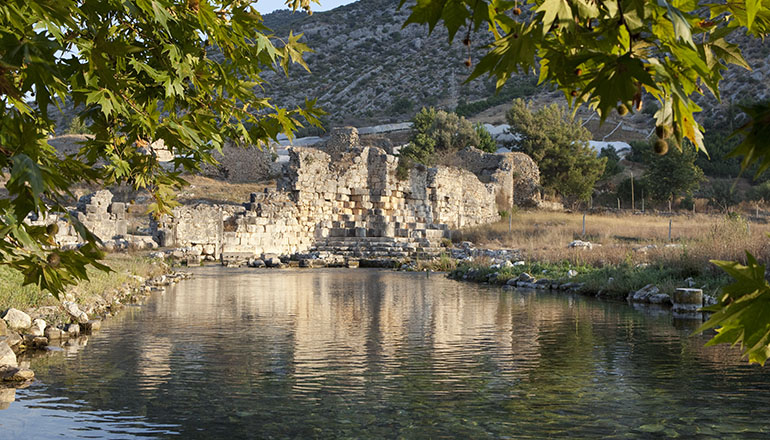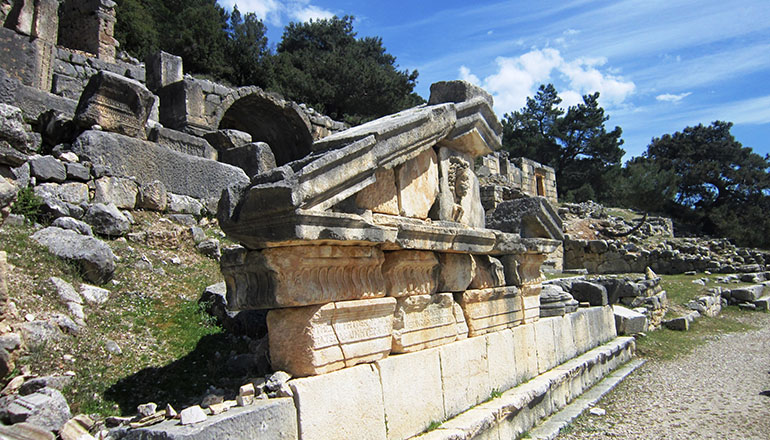Zemuri The ancient city of Limyra was founded at the base of Mount Toçak, 9 km east of Finike. Its Lycian name, Zemuri, is believed to have originated from the Hittite word Zumarri. The acropolis in the northern part of the city consists of an inner and lower castle. The Lower Castle includes fortification walls, cisterns, a Byzantine church, and the Heroon of Perikle. King Perikle's monumental tomb, dating back to the 4th century BC, has a similar architecture to that of the Nereidler Monument in Xanthos. The Antalya Museum displays significant parts of the structure. The theatre building stands adjacent to the highway, where the acropolis meets the plain. It was constructed during the Hellenistic Period and underwent major repairs in 141 AD. The Ptolemaion The southern part of the highway is split into two islands, east and west, by the Limyros Stream. The area within the Early Byzantine fortification to the west of Limyros contains older remains than the area to the east. A building called 'Ptolemaion' was discovered within the southern wall of the fortification. Additionally, the monumental tomb (cenotaph) of Gaius Caesar, the spiritual son of Emperor Augustus, built in 4 AD, is one of the significant structures of the ancient city. The impressive tomb is renowned for its architecture and the marble reliefs that adorn it. The high relief on display at the Antalya Museum is of exceptional quality, showcasing the realism of the Augustus Period (27 BC - 14 AD). The Rock Tombs Limyra has over 400 rock tombs, making it one of the cities with the most rock tombs in the Lycian Region. The inscriptions in Lycian language provide information about the owners of the tombs.
LİMYRA ARCHAEOLOGICAL SITE





